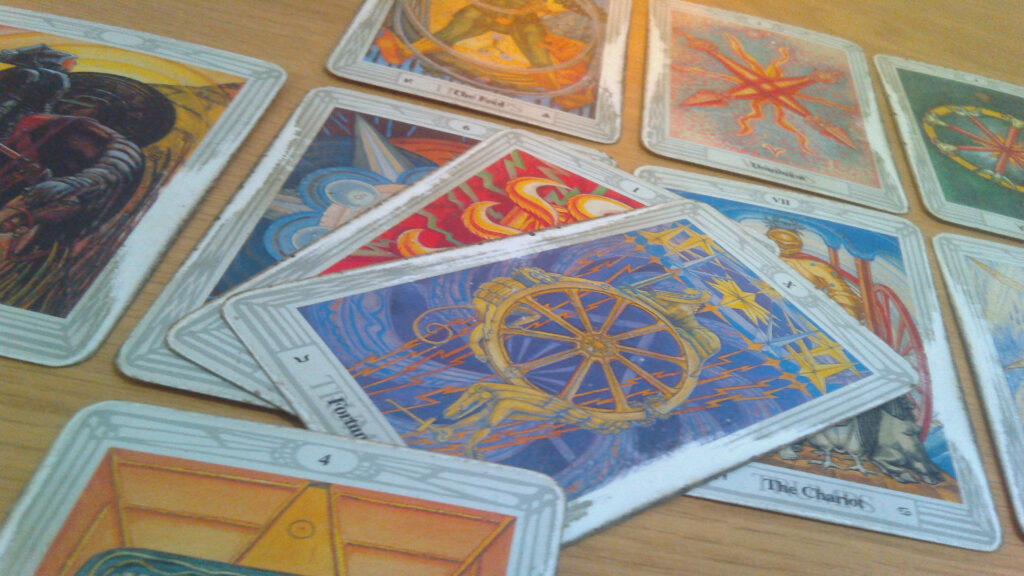
Pamela Smith is the Smith of the Waite-Smith tarot deck, the most well-circulated tarot deck in the world. She was a bi-racial American artist, designer, editor, and writer who was born in England; she spent a significant part of her childhood in Jamaica. Her art was primarily known for its striking originality drawing from a range of influences. She wrote and published several books (including an illustrated collection of Jamaican folk tales, Anansi, which is still published today) and started her own magazine.
Cognizant of difficulties many Anglo-Americans had in determining key facts about her, such as her age and ethnicity, Pamela also wrote under the pseudonym “Pixie.” “This difficulty of readily “placing” her age, ethnicity and class translates into a tendency both to exoticize her background and to depict her as simple and naive.”
Her approach to Tarot could be considered much more modern than many of her peers, as evidenced:
Note the dress, the type of face; see if you can trace the character in the face; note the pose…First watch the simple forms of joy, of fear, of sorrow; look at the position taken by the whole body…you have found how to tell a simple story, put in more details …Learn from everything, see everything, and above all feel everything! …Find eyes within, look for the door into the unknown country. From “Should the Art Student Think?” published in The Craftsman, July 1908.
Having met William Yeats, Pamela made her way into “the Society of the Hermetic Students of the Golden Dawn, where she met Edward Rider Waite—the person who commissioned her now famous tarot deck in 1909. “Here she met Arthur Edward Waite, with whom she co-created the Rider-Waite-Smith Tarot, and Aleister Crowley, creator of the Thoth Tarot. The group later disbanded and Colman Smith and Waite both ended up in a splinter organisation, and meanwhile, he asked her to illustrate the tarot he had conceived.” Pamela was the first person to ever illustrate the cups, pentacles, wands and swords with scenes on them rather than simply showing the number of units on them.
In 1971, U.S. Games bought the right to publish the deck and published it under the title The Rider Tarot Deck (because of differences in U.S. and U.K. copyright law, the extent of their copyright in the Waite-Smith deck is disputed). In later editions they changed the name to Rider Tarot and then Rider Waite Tarot. Today most scholars, in order to recognize the importance of Smith’s contribution, refer to the deck as the Waite-Smith Tarot. Tarot writers often refer to the deck with the simple abbreviation of RWS, for Rider-Waite-Smith.
Most sources say that she received barely any money at all from the Tarot deck which her other partners profited from. She made various attempts to make money throughout her life but none succeeded. In 1911, she converted to Catholicism. In 1918 she moved to Cornwall, UK, and lived quietly. The century since the deck’s first printing, there have been dozens of editions put out by various publishers; for some of these the Smith drawings were redrawn by other artists, and for others the cards were rephotographed to create new printing plates.

